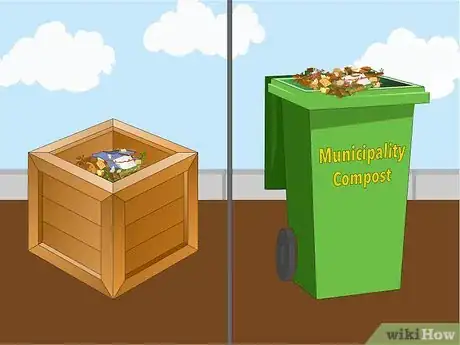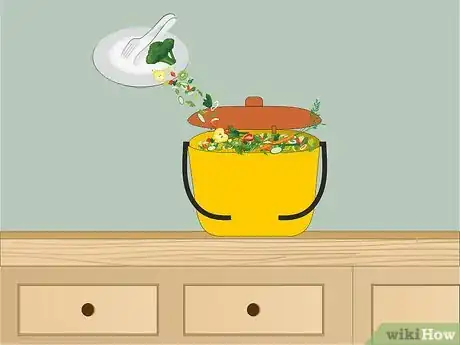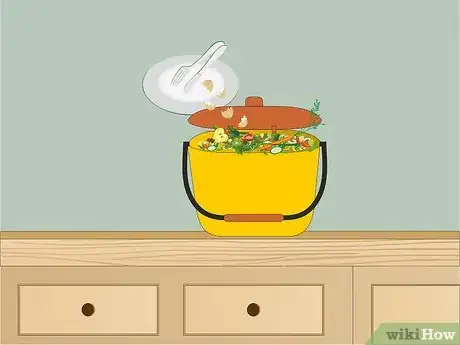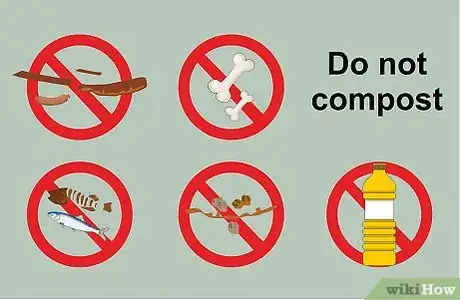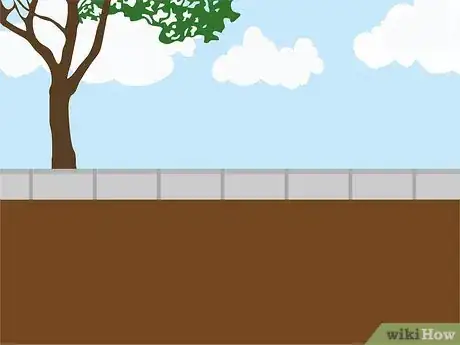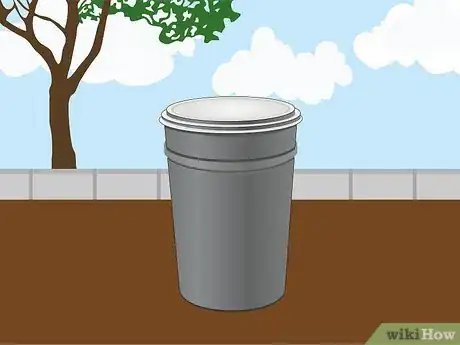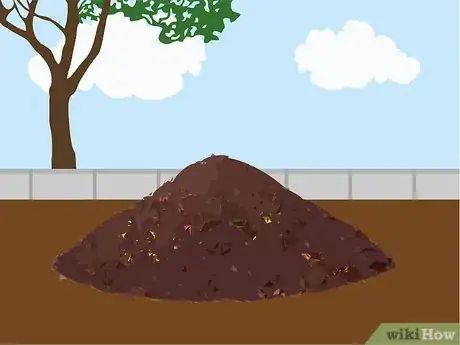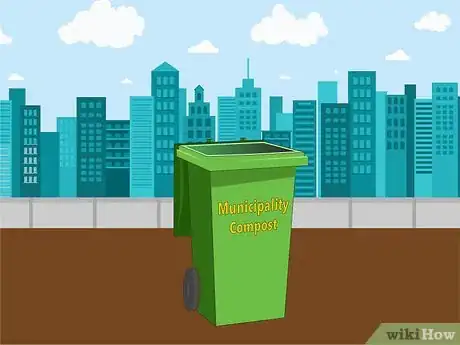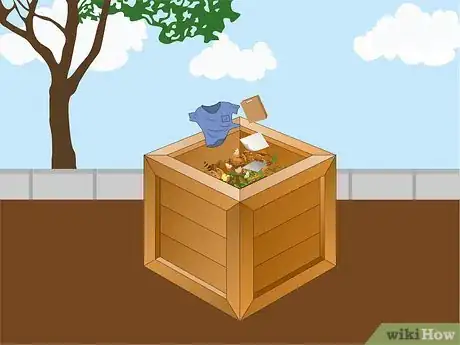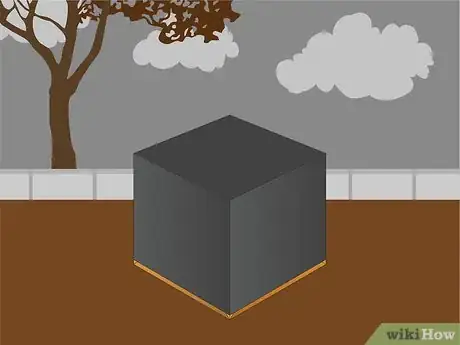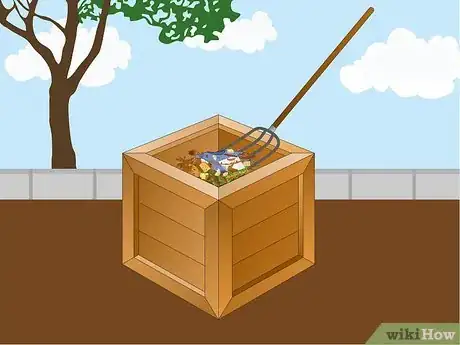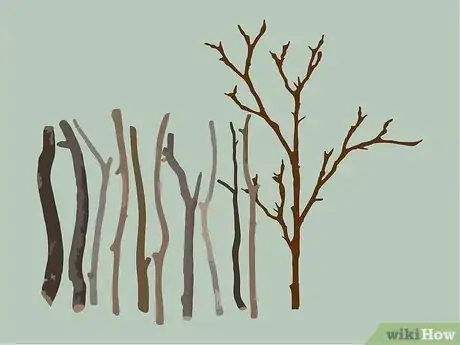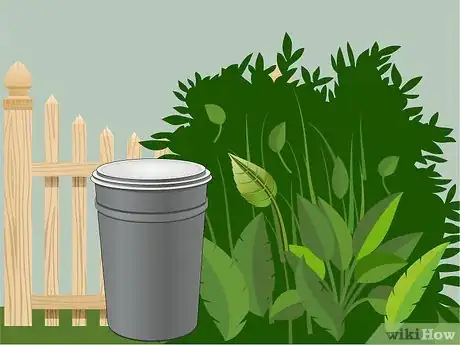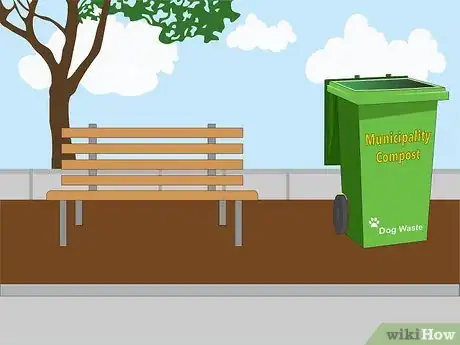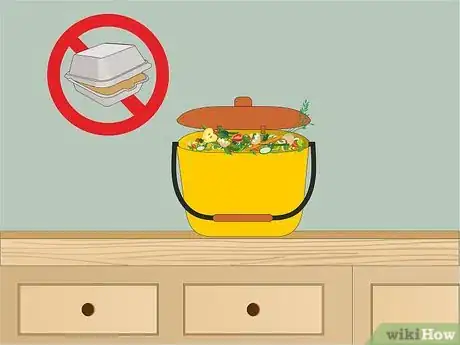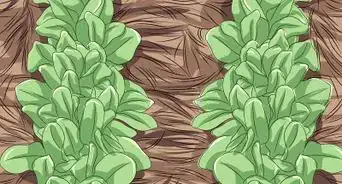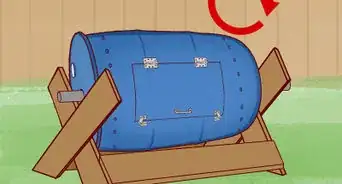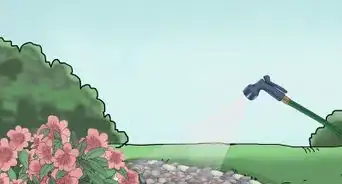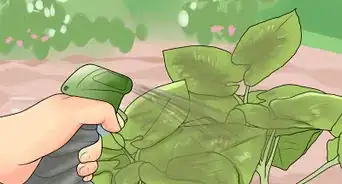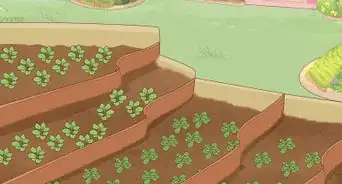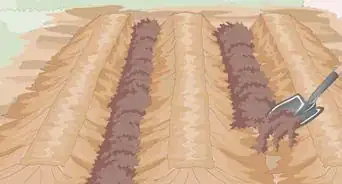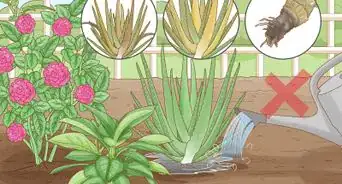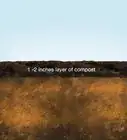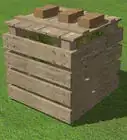This article was co-authored by Kathryn Kellogg. Kathryn Kellogg is the founder of goingzerowaste.com, a lifestyle website dedicated to breaking eco-friendly living down into a simple step-by-step process with lots of positivity and love. She's the author of 101 Ways to Go Zero Waste and spokesperson for plastic-free living for National Geographic.
There are 8 references cited in this article, which can be found at the bottom of the page.
wikiHow marks an article as reader-approved once it receives enough positive feedback. This article received 18 testimonials and 96% of readers who voted found it helpful, earning it our reader-approved status.
This article has been viewed 1,002,543 times.
Composting is one of the simplest ways you can make a positive impact on the environment. Yet, we often end up wasting our food and garden scraps by sending them to the landfill.
Most people don’t realize that 30% of what we throw out could be composted.[1]
Despite that statistic, sustainability expert Kathryn Kellogg suggests that if there’s just one thing we should be doing to help the planet, it’s–you guessed it–composting.[2]
Want to reduce your food waste and start living more sustainably? Check out these simple steps to starting your own compost pile.
Steps
Collecting Kitchen Scraps
-
1Decide how kitchen scraps will be used. Before you start collecting your kitchen scraps, you need to know if you will be using them for a personal compost bin or if they will be going to a municipal composting program. Making this distinction is important because you can compost more food items in a municipal composting program than you can at home.[3]
- For a municipal program, you can often collect all biodegradable kitchen scraps, including meat and dairy.
-
2Get a small compost container for indoors. Have a mini compost bin indoors that you keep near your meal preparation area. It should be something that is easy to fill up, transport daily to the compost bin, and keep clean. You could consider a small plastic container (there are fun tiny garbage cans with lids) or use something as simple as a ceramic bowl with a saucer over it.[4]
- Locate your compost bin somewhere that is easy to access, so that you and family members will be encouraged to use it.
Advertisement -
3Collect all fruit and vegetable scraps. The best kitchen scraps to add to your compost pile are those fruit and vegetable scraps because they break down quickly and do not attract rodents and insects in the same way that animal products do. Add all of your fruit and vegetable scraps, including those that have been cooked.[5]
-
4Use only select animal products in home composting. While all animal products that are used in the kitchen can go into municipal composting bins, there are only a few that you should add to your home bins. One of the few animal products to add is egg shells, as these add calcium to the compost, which will help your plants grow.[6]
-
5Know what not to compost. There are a variety of biodegradable items that can't be composted at home for reasons of health, hygiene and inability to break down. These include:
- Meat and meat scraps
- Bones
- Fish and fish bones
- Oil or fat
- Pet or human feces (except for manure of herbivorous creatures such as rabbits and horses)
Setting Up a Compost Pile in Your Yard
-
1Pick a spot for your compost pile. Your compost should be in a location that is not too close to your home, so that any smells produced won't bother you and so that any rodents that visit it won't migrate into your home. It can be in the sun or shade, but understand that compost bins in the sun will break down quicker but will likely need more water added. Also, make sure the pile is in an area where there is room to turn it.[7]
- It is best to have a compost pile on an area of soil a few feet away from plants, not on a deck or patio, so that turning and moving the compost will be easy.
-
2Purchase a pre-made compost bin. If you want a quick and easy way to start your compost pile, there are a variety of bins that can be purchased at home improvement stores or through many local municipalities. These are often black plastic tubes with a lid on top and an open bottom. They are typically cheap to purchase and easy to set up and use right away.
- The solid-sided black plastic compost bins also provide a bit of protection from rodents or other animals getting into your compost pile, while open topped or sided bins do not.
-
3Construct a bin for your compost. If you have a specific shape or size of bin you want, it is easy for you to make your own custom compost bin. Most home compost bins have a frame made of wood and sides that can either be wood or wire mesh. Depending on your needs, aim for the bin to be at least 1 cubic yard or 1 cubic meter, as this will give you a decent amount of compost while not taking up too much space in your yard.
- A 1 cubic yard compost bin will be about 3 feet (0.91 m) tall and the sides will be 4 feet (1.2 m) wide.
-
4Consider making a pile right on the ground. While compost containers keep compost contained and can help keep rodents and other animals at bay, it is also OK to make a composting pile right on the ground. All that is required is a designated space where your yard debris and kitchen scraps can be piled up.[8]
- While having a bin will keep the process neater and will help to discourage animals if you are composting food scraps, having a simple pile will make turning and maintaining the compost quicker and easier.
-
5Participate in municipal composting if you can't make your own pile. While having a compost pile at home allows you to make and use compost, you can still avoid wasting your kitchen scraps by putting them in a compost container that is collected and used by your city. Many cities now have these programs, which collect kitchen scraps and add them to industrial composting processes.[9]
- In addition to not letting your scraps go to waste, putting kitchen waste into a compost container instead of the garbage helps you save a lot of room in your garbage can.
- Contact your local municipality to see if they will collect garden waste for composting. If they will not, consider joining a peer-to-peer composting system like ShareWaste.
- How kitchen waste is collected by cities varies. Some municipalities have you add it to your yard debris container, while others have separate containers for kitchen scraps.
Filling Your Compost Bin
-
1Layer the bottom with lightweight brown material, if possible. To begin the actual pile, add leaves or other dry yard debris that you have available. Ideally this layer should be a few inches deep and will give the pile a good, solid base.
- If you don't have any brown material to use, you can still start your pile. You can also use a light sprinkling of garden soil or recently finished compost to start the pile, which will introduce the correct bacteria.
-
2Collect green composting materials. Green materials, which are high in nitrogen, are used to activate the heat process in your compost. Some perfect heat-generating materials include: young weeds (before they develop seeds), comfrey leaves, yarrow, and grass cuttings. Other green items that compost well include fruits and vegetables, fruit and vegetable scraps, coffee grounds, tea leaves (including tea bags with the staple removed), and chicken, turkey, cow or horse manure.
- Especially avoid compacting large quantities of green materials together, since they can rapidly become anaerobic. This means that there will not be enough oxygen for the most beneficial microbes to thrive and decompose your compost materials.
-
3Use a lot of brown materials. Brown materials, which are high in carbon, serve as the "fiber" for your compost. Brown materials include fall (autumn) leaves, dead plants and weeds, sawdust, straw, old flowers (including dried floral displays, minus plastic/foam attachments), and hay.
-
4Add other items to your bin. Other items that can be composted include: paper towels, paper bags, cotton clothing (torn up), egg shells, and hair (human, dog, cat etc.). However, use all these items in moderation.
-
5Layer a variety of materials in your bin. The ideal compost pile is between 3 parts brown materials to 1 part green to half and half, depending on what materials you have on hand. These items should come into contact with one another and should be laid down in thin layers that are only a few inches deep.[10]
-
6Cover your bin or bury food scraps under a layer of general yard waste. If you want to include food scraps in your compost pile, you need to be cautious about attracting animals and insects and creating bad smells. To help stop these problems, cover the whole bin with a lid or simply cover kitchen scraps immediately with a layer of yard debris.
- If you don't have new yard clippings or debris to add, just tuck your kitchen scraps under the existing top layer in the compost bin.
Caring For Your Compost
-
1Keep your compost moist. In order for biodegradable items to break down quickly, they need to be in contact with moisture. The easiest way to do this is to sprinkle each layer lightly with water as you build the heap. Add water or wet, green materials if the pile seems dry. However, add dry, brown materials if the pile seems too wet.[11]
- In dry weather, fill your compost bucket with water each time you dump it in the compost pile. This will help add needed moisture.
- Your pile should be about as damp as a sponge that has been wrung out.
-
2Crush compost materials into small pieces to speed up the process. In order to help compost break-down faster, shred leaves and other yard debris and crush egg shells. Since it takes longer for larger pieces to break down, this will speed up the time it takes to make compost.
-
3Help the pile heat up. You want the compost pile to be warm so that microbes will thrive and break down the organic material you have collected. Covering the compost with a black garden cloth or other black covering during cold weather will help raise the temperature.
- The temperature of the compost pile is very important and is an indication of the microbial activity of the decomposition process. The simplest way to track the temperature inside the heap is by feeling it with your hand. If it is warm or hot, everything is decomposing as it should. If it is the same temperature as the surrounding air, the microbial activity has slowed down and you need to add more materials that are high in nitrogen (green materials) to the bin.
- Covering the top of the container will also make the compost pile look neater.
-
4Mix the compost. Move matter from inside to outside and from top to bottom. Break up anything that is clumpy or matted. If you are still adding to the pile, take the opportunity while you turn it to introduce the new matter and mix it well with the older matter.
- You can turn the pile by using a pitchfork and moving the entire pile to the clear spot. Mix it up and then move it back into the bin. Mixing the pile in this way helps to keep air flowing inside the pile, which encourages decomposition.
- You can also get a tool that is specifically made for mixing compost. This compost mixer is a pole with a handle on 1 end and mixing tines on the other. You simply shove the tines down into the compost pile and then twist the handle to mix.
-
5Turn your pile once every week or 2. It's a good idea to mix your compost on a regular basis, especially if you are adding kitchen scraps that could become smelly if not mixed in. Turning the pile helps to encourage the growth of the right kind of bacteria and makes for a nice, sweet-smelling pile that will decompose faster.
-
6Determine whether the compost is ready. At some point, you may need to stop adding to the compost pile to let it "finish up." You will know your compost is ready for use when it is no longer warm and it is a deep brown color throughout.[12]
- It usually takes about 2 to 3 months for compost to be made, depending on the weather conditions and the contents of your pile.
- Very fresh compost can grow plants, but it can also rob the soil of nitrogen as it continues to break down. If you think your compost is not all the way done, either leave the compost in the bin for a while longer or spread it in your garden and let it sit there for a few weeks before planting anything in it.
-
7Use your compost. If all goes well, you will eventually find that you have a layer of good compost at the bottom of your bin. Remove this and spread it on or dig it into your garden beds.
- You may wish to sift it through a coarse mesh screen or use your hands or pitchfork to remove any larger chunks that haven't yet broken down.
- Composting works almost magically and fast. If you begin with a cubic yard of proper materials, keep it moist, and turn it weekly, it's possible to get several large batches of compost each year.
Avoiding Common Mistakes
-
1Expect the compost to heat up. Some people that create a compost pile get worried when they are turning their compost and they discover it is hot in the middle. While it's not strictly necessary, a compost pile that's working at its fastest will heat up. If you have created a good mix, you may notice that it's very warm inside, even steaming on a cold morning. This is a good sign.
-
2Decide whether to add slow-rotting items. There are some types of yard debris that can go in the compost but they will take a long time to biodegrade, such as tough branches, twigs, and hedge clippings. You may want to compost them separately because they will take longer to break down, especially in a cold climate with a shorter composting season, than other items.
- Shred heavy materials, if you can, for faster decomposition.
-
3Be cautious about adding weeds to your compost pile. You can put weeds in your compost but there is risk that this could spread them around your yard. If you are sure they have not already gone to seed, then they are perfectly safe to compost. However, if they have gone to seed, the safest thing to do is to put them in your yard debris bin instead of your compost bin.[13]
-
4Keep animal waste out of your compost bin. While it's technically possible to compost dog feces, this must only be attempted under very special conditions in municipally sanctioned compost bins; usually these are located in local parks. Do not use this compost in or near vegetable and fruit gardens. Check with your local municipality for more information. Encourage your municipality to supply these bins in parks and on dog-walking routes.
- Manure of any animal that eats meat should never be added. While herbivorous animals' manure can be great for composting, the manure of a pig, dog, cat, or other carnivore/omnivore can contaminate your compost and plants with food-borne illnesses.
-
5Don't add compostable containers to your home compost bin. There are a variety of to-go food containers that are being used today that are marked as compostable. However, they are typically only compostable in industrial composting processes. They will not break down properly in a home compost bin because the temperatures don't get high enough there.
Can You Mix Compost With Soil?
Expert Q&A
Did you know you can get expert answers for this article?
Unlock expert answers by supporting wikiHow
-
QuestionWhat if I live in an apartment and can't set up a compost pile?
 Kathryn KelloggKathryn Kellogg is the founder of goingzerowaste.com, a lifestyle website dedicated to breaking eco-friendly living down into a simple step-by-step process with lots of positivity and love. She's the author of 101 Ways to Go Zero Waste and spokesperson for plastic-free living for National Geographic.
Kathryn KelloggKathryn Kellogg is the founder of goingzerowaste.com, a lifestyle website dedicated to breaking eco-friendly living down into a simple step-by-step process with lots of positivity and love. She's the author of 101 Ways to Go Zero Waste and spokesperson for plastic-free living for National Geographic.
Sustainability Specialist
-
QuestionWhat can I use for compost if I don't have a garden?
 Kathryn KelloggKathryn Kellogg is the founder of goingzerowaste.com, a lifestyle website dedicated to breaking eco-friendly living down into a simple step-by-step process with lots of positivity and love. She's the author of 101 Ways to Go Zero Waste and spokesperson for plastic-free living for National Geographic.
Kathryn KelloggKathryn Kellogg is the founder of goingzerowaste.com, a lifestyle website dedicated to breaking eco-friendly living down into a simple step-by-step process with lots of positivity and love. She's the author of 101 Ways to Go Zero Waste and spokesperson for plastic-free living for National Geographic.
Sustainability Specialist Look for an affordable private composting service as an alternate option. If you live in a place without a garden area, or if your city doesn't have a municipal composting service, there are many private organizations that provide composting as a service. They'll give you a bucket for compost and come to pick it up, and you get free compost anytime you need it!
Look for an affordable private composting service as an alternate option. If you live in a place without a garden area, or if your city doesn't have a municipal composting service, there are many private organizations that provide composting as a service. They'll give you a bucket for compost and come to pick it up, and you get free compost anytime you need it! -
QuestionWhy does compost need sunshine?
 Community AnswerSunshine provides heat. This heat is needed to keep the composting process going.
Community AnswerSunshine provides heat. This heat is needed to keep the composting process going.
Things You'll Need
- A spot for your compost pile
- A compost bin or container
- Kitchen scraps, yard waste, and other compost materials
- A pitchfork or other tool to turn the compost
References
- ↑ https://www.epa.gov/recycle/composting-home
- ↑ Kathryn Kellogg. Sustainability Specialist. Expert Interview. 28 June 2019.
- ↑ https://www.epa.gov/recycle/composting-home
- ↑ https://www.portlandoregon.gov/bps/article/402972
- ↑ https://www.goodhousekeeping.com/home/gardening/advice/a23945/start-composting/
- ↑ https://www.epa.gov/recycle/composting-home#basics
- ↑ http://www.finegardening.com/article/compost
- ↑ https://www.goodhousekeeping.com/home/gardening/advice/a23945/start-composting/
- ↑ https://www.portlandoregon.gov/bps/article/402972
- ↑ https://www.goodhousekeeping.com/home/gardening/advice/a23945/start-composting/
- ↑ http://www.finegardening.com/article/compost
- ↑ https://www.oregonmetro.gov/tools-living/yard-and-garden/composting/composting-methods
- ↑ http://www.finegardening.com/article/compost
- ↑ http://www.finegardening.com/article/brewing-compost-tea
About This Article
To start composting in your yard, build or buy a compost bin out of wood or wire mesh. Layer dry, “brown” waste like leaves and soil with green materials like grass cuttings and kitchen scraps until you fill up your bin. To speed up the composting process, sprinkle each layer with water, crush materials into smaller pieces, and place a black cloth on top to keep it warm. Mix your compost with a shovel or pitchfork every week or two. When your compost is deep brown and no longer warm, you can start using it in your yard. To learn more, about common things to avoid putting in your compost bin, keep reading the article!

